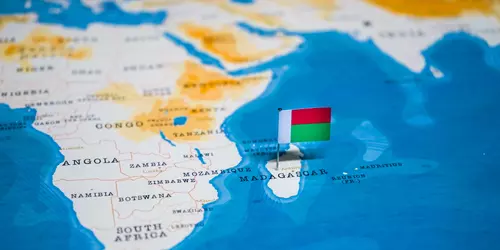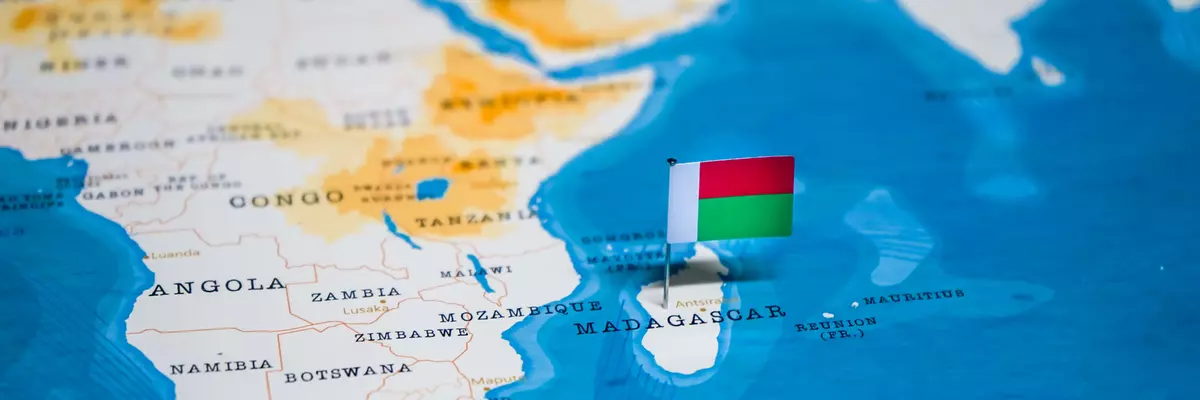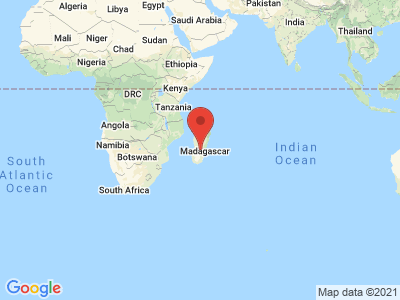Climate Table Madagascar
Jan | Feb | Mar | Apr | May | Jun | Jul | Aug | Sep | Oct | Nov | Dec | |
|---|---|---|---|---|---|---|---|---|---|---|---|---|
| Max. Temperature | 30° | 30° | 29° | 28° | 27° | 25° | 24° | 24° | 26° | 27° | 29° | 30° |
| Min. Temperature | 23° | 23° | 23° | 22° | 20° | 18° | 18° | 18° | 18° | 19° | 21° | 22° |
| Sun Hours | 7 | 7 | 6 | 7 | 7 | 6 | 6 | 6 | 7 | 8 | 8 | 8 |
| Water Temperature | 27° | 27° | 27° | 26° | 26° | 25° | 24° | 23° | 23° | 24° | 25° | 26° |
| Rain Days | 19 | 17 | 21 | 18 | 17 | 18 | 22 | 20 | 15 | 13 | 14 | 17 |
The climate year of Madagascar
Madagascar is only slightly larger than California with a humid east coast and dry west coast. The other three areas are the Tsaratanana Massif in the north with the highest mountain on the island, the central highlands along the entire length of Madagascar (800 to 1,800 meters high), and the southwest with almost no rain at all. There are, roughly speaking, two seasons: from November to April there is a hot and rainy period (southern summer), from May to October it is cool and dry (southern winter).
On the east coast, the southeast trade wind blows all year round and the moisture it brings rains down on the coastal mountains. Thus, it rains most here from October to April, about 3,500 mm per year, with only about 1,500 mm of rain in the southeast. Tropical cyclones occur on the east coast from January to March. The west is in the lee of the mountains. It also rains here, but not as much as on the east coast. Between May and October there is a dry season, with very little rain. The highlands around the capital Antananarivo are in the rain shadow of the eastern mountains, so it is drier here, with a warm temperate climate.
General information about Madagascar
The highlights of Madagascar are the 47 nature reserves, national parks and marine reserves, such as the Cap Sainte Marie Nature Reserve,
63 km south of Tsihombe. There are mainly turtles - the ray turtle and the spider turtle. Up to 3000 have been counted on 1 square kilometer. In addition, the endemic Madagascar sand iguana and the yellow colored bat can be found here. Or the Mananara North National Park on the east coast with a protected area of 144,000 ha in the bay of Antongil in the Analanjirofo region. Here live about 77 species of birds and 13 species of lemurs (semi-monkeys), the forest spirits of Madagascar. In the nature reserve Tsingy of Bemaraha a sensation is waiting: a fascinating landscape with gorges, canyons, caves and grottos of silvery blue fissured, filigree stone formations. They were formed from huge coral reefs, which were lifted out of the sea and worked by wind and weather. Near Morondava is the Baobab Avenue that leads to Belo sur Tsiribihina in the Menabe region of western Madagascar. Along the way are many very beautiful baobab trees that are very popular to photograph.
Tourism Madagascar
February to April there is low humidity in the highlands, as well as between October and November. On the coasts it is warm all year round with high humidity of 65 to 80% and violent winds and thunderstorms must be expected. Rainy season is between October and March, drier is April to September. Pleasant weather for round trips in the highlands and the coast are the months of April and May or September and October. In the highlands, humidity is lowest in February and March and in October and November. In the southwest it rains mainly in December, January, February and March. The other months are rain-free. For a trip in the highlands, the European winter or spring is suitable, as the weather is most consistent then.


